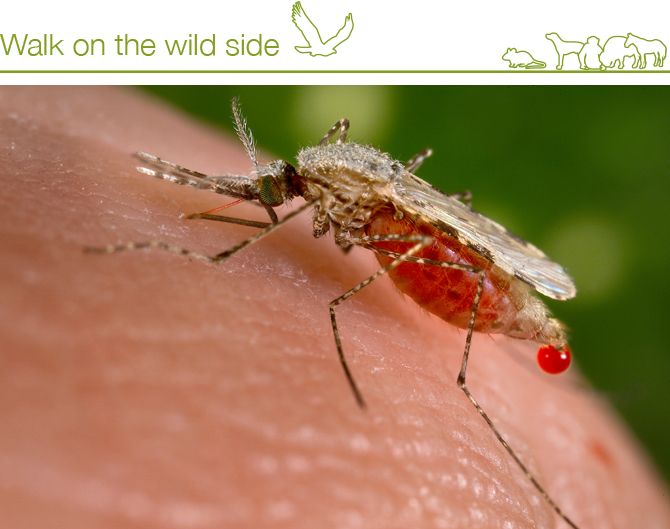
Mosquito trap relies on scent to fight malaria
Malarial mosquitos kill more people than any animal on Earth, even though various control methods have reduced their numbers by half. KTH researcher Jenny Lindh and her colleagues have developed a new control method based on the mosquitos' nesting behavior. There is actually a mix of scents that determines where females choose to lay eggs.
Existing mosquito controls — based on how mosquitos obtain blood — have already cut the number of malaria cases in half during the last 15 years. But mosquito-human interaction isn't the only battleground where the deadly insects can be taken on.
The females need blood for their eggs' development. But, as Lindh points out, the mother first needs to find a place to lay the eggs.
A researcher in organic chemistry, Lindh is particularly interested in environmentally-friendly control of insects. Her work involves replacing chemical insecticides with alternatives, such as toxins that are drawn from nature.
"Lately, I have worked with malaria mosquitoes. But in the past I worked with tsetse flies," Lindh says. "My colleagues are working with the bark beetle and pine weevil, which causes damage to pine and spruce."
In the research project, OviART, Lindh and colleagues conducted field trials in Kenya to see if it were possible to develop a control based on the way malaria mosquito lay eggs. It turned out that these insects rely on sight and smell in choosing where to lay their eggs. The type of water they choose — murky rather than clear — indicates that vision is a major factor in their selection.
And then there's fragrance. Lindh and her colleagues found that female mosquitos are attracted to a cedar-smelling substance called cedrol. The discovery marks the first time a specific substance has been demonstrated to attract malarial mosquitos to lay their eggs.
The results were published last spring in the Malaria Journal.
But in order to get a workable control method, it isn't enough to identify what chemical attracts mosquito females. Data from the experiments suggests that females look for a variety of fragrances — a variety of attractants.
"We need to find a mix of scents that can attract the females," Lindh says. "We have about a dozen candidates. There are certain substances that are only found where the females lay eggs, and are never found where they do not lay eggs. These are definitely worth testing."
With a mix of odors that attract mosquito females, combined with what is known about the type of water the females prefer, it becomes possible to develop effective mosquito traps based on egg laying behavior, she says. The project has successfully tested traps consisting of a container containing water and attractants. There is also a fan that spreads the fragrance while sucking mosquitos into an enclosure.
"But for this method to work, it requires the mix of fragrances that females go running toward," she says.
"The project is finished, but we are now looking for money for further studies that will test and verify the dozen candidates of attractants that have been identified. The goal is to develop a new functional method of control," she says.
This method however isn't meant to replace existing controls that work great against mosquitoes that find their way indoors to suck blood, Lindh says. "But there is room for improvement regarding mosquitos that are outside in the night.
"We are careful to say that our approach is a complement."
Håkan Soold